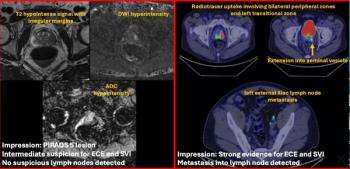
PACS installations in U.S. hospitals top 1300
At least one-third of all U.S. hospitals have installed radiology PACS, and another 10% have installations pending, according to the Annual Report of the US Hospital IT Market released May 18 by the Healthcare Information and Management Systems Society and HIMSS Analytics, its market research arm.
At least one-third of all U.S. hospitals have installed radiology PACS, and another 10% have installations pending, according to the Annual Report of the US Hospital IT Market released May 18 by the Healthcare Information and Management Systems Society and HIMSS Analytics, its market research arm.
The report reflects 2004 and first quarter 2005 data from 3989 of the 5764 registered U.S. hospitals.
Another 32% of hospitals plan to purchase PACS for the first time, and the remaining 25% are not yet automated, the report said.
Approximately two-thirds of the facilities planning to purchase PACS plan to do so in the next two years. Most of the planned purchases are in the 100 to 399-bed range.
The percentage of PACS sites and pending installations breaks depending on institution size:
- under 100 beds: 25%
- 100 to 199 beds: 37%
- 200 to 299 beds: 47%
- 300 to 399 beds: 54%
- 400 to 499 beds: 68%
- 500 or more beds: 82%
Only 3% of large hospitals (500 or more beds) have no radiology PACS or plans to purchase one, compared with 43% of hospitals under 100 beds.
Half of all radiology PACS contracts were signed in 2003 (32%) and 2004 (18%), according to the report. It found that urban hospitals (36%) were more likely to have PACS solutions installed than rural (15%), and academic institutions (71%) more likely than nonacademic (30%).
"Radiology PACS penetration continues to progress well in hospitals due to its significant operational improvements relative to radiology services, although PACS/radiology information system integration and interoperability has still not attained the level of performance desired by radiology departments," the report concluded.
The report also stated that archival storage strategies for medical images are still immature and fragmented.
"This will become a critical issue as new generations of MRI and PET equipment generate significantly more images," it said.
Newsletter
Stay at the forefront of radiology with the Diagnostic Imaging newsletter, delivering the latest news, clinical insights, and imaging advancements for today’s radiologists.




























